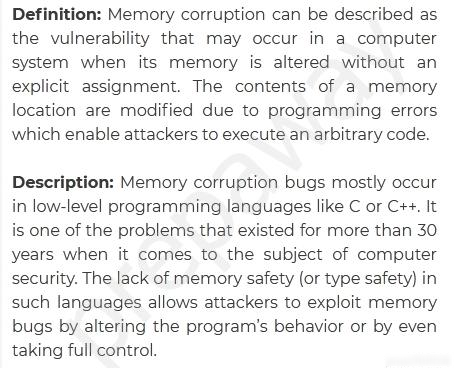Memory Consumption Attack
Question
A security analyst received a SIEM alert regarding high levels of memory consumption for a critical system.
After several attempts to remediate the issue, the system went down.
A root cause analysis revealed a bad actor forced the application to not reclaim memory.
This caused the system to be depleted of resources.
Which of the following BEST describes this attack?
Answers
Explanations
Click on the arrows to vote for the correct answer
A. B. C. D.B.
https://economictimes.indiatimes.com/definition/memory-corruption
The BEST description of the attack that caused the system to go down due to high levels of memory consumption is Denial of Service (DoS) attack.
A Denial of Service attack is a type of cyber attack that aims to make a computer or network resource unavailable to its intended users. The attacker floods the system with traffic, requests, or other activities that consume resources such as CPU cycles, memory, or network bandwidth until the system becomes overwhelmed and can no longer function.
In this scenario, the bad actor forced the application to not reclaim memory, causing the system to be depleted of resources. This action could be considered a form of resource exhaustion, which is a type of Denial of Service attack. By not allowing the application to reclaim memory, the attacker is causing the system to become overwhelmed and eventually crash.
Injection attacks involve malicious code or commands being injected into a system or application to exploit a vulnerability. Memory corruption occurs when an attacker exploits a vulnerability to modify data stored in memory to perform unauthorized actions. An array attack is a type of buffer overflow attack that exploits a vulnerability in an array or other data structure.
In summary, the attack described in the scenario is a form of Denial of Service attack that caused the system to go down due to resource exhaustion.